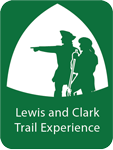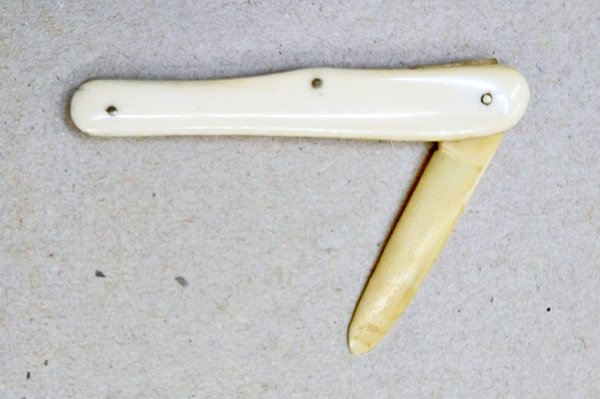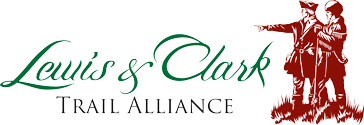Lewis writes a letter to President Jefferson describing his time in Cincinnati. He tells Jefferson that his kinepox vaccine—used to prevent smallpox—has spoiled and also asks for a copy of the Louisiana Purchase treaty.
The ions, oxides, and salts present in metals could destroy the inoculant material. Hence, the use of ivory lancets like that shown above was common. The material was sometimes stored and administered from quills or thread.[1]John W. Fisher, 17 August 2023 email; Benjamin Waterhouse, A Prospect of Exterminating the Small Pox, Part II (Cambridge: The University Press, 1802), 16, archive.org/details/2576050R.nlm.nih.gov. … Continue reading
Spoiled Kinepox Vaccine
Cincinnati, October 3rd 1803.
Dear Sir,
I would thank you for forward[ing] me some of the Vaxcine matter, as I reason to believe from several experiments made with what I have, that it has lost its virtue.
MERIWETHER LEWIS. Capt.
1st. U.S. Regt. Infty.[2]Donald Jackson, ed. Letters of the Lewis and Clark Expedition with Related Documents: 1783-1854, 2nd ed., (Urbana: University of Illinois Press, 1978), 130.
Treaty Requested
Cincinnati, October 3rd 1803.
Dear Sir,
So soon Sire, as you deem it expedient to promulge the late treaty, between the United States and France I would be much obliged by your directing an official copy of it to be furnished me, as I think it probable that the present inhabitants of Louisiana, from such an evidence of their having become the Citizens of the United States, would feel it their interest and would more readily yeald any information of which, they may be possessed relative to the country than they would be disposed to do, while there is any doubt remaining on that subject.
MERIWETHER LEWIS. Capt.
1st. U.S. Regt. Infty.[3]Ibid., 130_31.
Thomas Jefferson and the Kinepox Vaccine
While in Paris in 1787, Jefferson and his slave Sally Hemmings received their inoculations and since at least 1800, he had been working with various physicians to inoculate Americans against smallpox using the kinepox vaccine.[4]“Memorandum Books, 1787,” Founders Online, National Archives, founders.archives.gov/documents/Jefferson/02-01-02-0021 [Original source: The Papers of Thomas Jefferson, Second Series, … Continue reading The vaccine was originally collected from pustules of infected cattle in Europe.
Within a community, new inoculant material could be collected from the kinepox pustules of those successfully inoculated. Because the infected matter was difficult to store for more than two weeks, successfully transporting it to North America delayed its use there for many years and attempts to harvest the vaccine from North American cattle was not successful until after 1850.[5]Andrea Rusnock, “Catching Cowpox: The Early Spread of Smallpox Vaccination, 1798–1810,” Bulletin of the History of Medicine, Vol. 83, No. 1, Special Issue: Reassessing Smallpox … Continue reading
In simplest terms, kinepox vaccine was difficult to maintain while traveling. The only method Lewis had while moving down the Ohio was to inoculate his crew, wait seven to nine days for their pustules to mature, and collect fresh material from that person. By 3 October 1803, the material Lewis was using failed to infect any recipients. There appears to be no record of Lewis ever receiving a new and effective supply.[6]One author claims—without citation—that St. Louis physician Antoine Saugrain received the vaccine from Lewis and Clark. Saugrain had gained a reputation as an inoculator in Gallipolis, Ohio prior … Continue reading
Experience the Lewis and Clark Trail
The Lewis and Clark Trail Experience—our sister site at lewisandclark.travel—connects the world to people and places on the Lewis and Clark Trail.
Plan a trip related to October 3, 1803:

Notes
| ↑1 | John W. Fisher, 17 August 2023 email; Benjamin Waterhouse, A Prospect of Exterminating the Small Pox, Part II (Cambridge: The University Press, 1802), 16, archive.org/details/2576050R.nlm.nih.gov. For Thomas Jefferson’s correspondence with Waterhouse, see also March 18, 1803. |
|---|---|
| ↑2 | Donald Jackson, ed. Letters of the Lewis and Clark Expedition with Related Documents: 1783-1854, 2nd ed., (Urbana: University of Illinois Press, 1978), 130. |
| ↑3 | Ibid., 130_31. |
| ↑4 | “Memorandum Books, 1787,” Founders Online, National Archives, founders.archives.gov/documents/Jefferson/02-01-02-0021 [Original source: The Papers of Thomas Jefferson, Second Series, Jefferson’s Memorandum Books, vol. 1, ed. James A Bear, Jr. and Lucia C. Stanton. Princeton: Princeton University Press, 1997, pp. 649–690.]; “Waterhouse to Jefferson,” Founders Online, National Archives, founders.archives.gov/documents/Jefferson/01-32-02-0177. [Original source: The Papers of Thomas Jefferson, vol. 32, 1 June 1800–16 February 1801, ed. Barbara B. Oberg. (Princeton: Princeton University Press, 2005), 264–265.] |
| ↑5 | Andrea Rusnock, “Catching Cowpox: The Early Spread of Smallpox Vaccination, 1798–1810,” Bulletin of the History of Medicine, Vol. 83, No. 1, Special Issue: Reassessing Smallpox Vaccination, 1789–1900 (Spring 2009), pp. 17-36, https://www.jstor.org/stable/44448713. |
| ↑6 | One author claims—without citation—that St. Louis physician Antoine Saugrain received the vaccine from Lewis and Clark. Saugrain had gained a reputation as an inoculator in Gallipolis, Ohio prior to the expedition, but this author could not find any documentation that he—or anyone—was inoculating against smallpox in St. Louis during the Lewis and Clark Expedition. |

